
Synthesis
Search
All Anaphonic website
All to generate sound
From 1950 to 2005 approx., all synthesizers, electric pianos, organs, effects, sequencers, controllers, samplers & much more...
Compare Tool
You can compare You can compare You can compare You can compare
The Rudolph Wurlitzer Company, usually referred to as simply Wurlitzer, is an American company started in Cincinnati in 1853 by German immigrant (Franz) Rudolph Wurlitzer. The company initially imported stringed, woodwind and brass instruments from Germany for resale in the U.S. Wurlitzer enjoyed initial success largely due to defense contracts to provide musical instruments to the U.S. military. In 1880, the company began manufacturing pianos and eventually relocated to North Tonawanda, New York, and quickly expanded to make band organs, orchestrions, nickelodeons and pipe or theatre organs popular in theatres during the days of silent movies. Over time, Wurlitzer acquired a number of other companies which made a variety of loosely related products including kitchen appliances, carnival rides, player piano rolls, and radios. Wurlitzer also operated a chain of retail stores where the company’s products were sold. As technology evolved, Wurlitzer began producing electric pianos, electronic organs, and jukeboxes and eventually became known more for jukeboxes and vending machines, which are still made by Wurlitzer, rather than for actual musical instruments. Inventor Benjamin Miessner had designed an amplified conventional upright piano in 1935, and Wurlitzer used his electrostatic pickup design, but replaced the strings with struck steel reeds. The improved model was co-invented by Paul Renard and Howard Holman for Wurlitzer in Chicago. The instrument entered production in 1954 as the EP-110, followed by the 111 and 112 of 1955, and continued to be produced in various forms until about 1983-4 when production of the 200A ceased. The Wurlitzer electronic piano, commonly called the Wurlitzer electric piano is an electric piano manufactured and marketed by Wurlitzer from the mid-1950s to the early 1980s. The sound is generated by striking a metal reed with a hammer, which induces an electric current in a pickup; although conceptually similar to the Rhodes piano, the sound is different. Wurlitzer manufactured several different models of electric pianos, including console models with built-in frames, and standalone stage models with chrome legs. The latter became popular with several R&B and rock musicians in the 1960s and 70s, particularly Supertramp. The official name of the instrument is the Wurlitzer Electronic Piano. However, the sound is generated electromechanically by striking a metal reed with a felt hammer, using conventional piano action. This induces an electrical current in a electrostatic pickup system using a DC voltage of 170v. Most Wurlitzer pianos are a 64-note instruments whose keyboard range is from A an octave above the lowest note of a standard 88-note piano to the C an octave below its top note. The sound is produced and the instrument is fitted with a mechanical sustain pedal. Compared with the equally-popular (Fender) Rhodes electric piano, the sound from a Wurlitzer is sharper and closer to a sawtooth wave, compared to the Rhodes which is closer to a sine wave. This gives the Wurlitzer a sharper and punchier tone. When played gently the sound can be quite sweet and vibraphone-like, sounding very similar to the Rhodes; while becoming more aggressive with harder playing, producing a characteristic slightly overdriven tone usually described as a “bark”.
About Pdf icons: If icons appear, the pdf is downloadable on the instrument's page. OM: Owner's Manual / SM: Service Manual / SCH: Schematics / BRO: Brochure
Showing 1–24 of 31 results
-

100
Read more -

106
Read more -

106P
Read more -

110
Read more -

111
Read more -

112
Read more -

112A
Read more -

120
Read more -
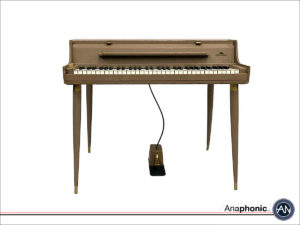
140
Read more -
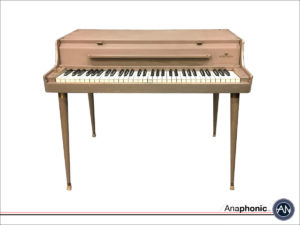
140B
Read more -
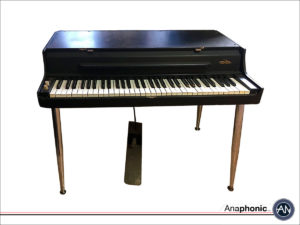
145
Read more -

145A
Read more -

145B
Read more -

200
Read more -
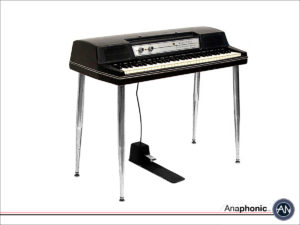
200A
Read more -

200B
Read more -
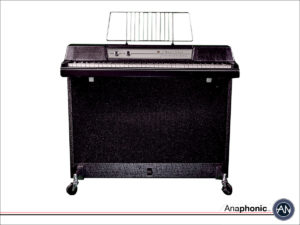
203
Read more -
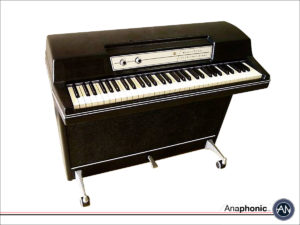
203W
Read more -
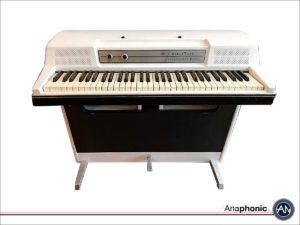
206
Read more -
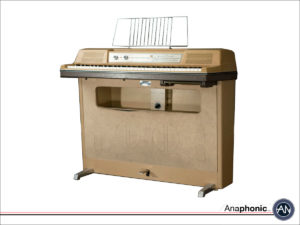
206A
Read more -
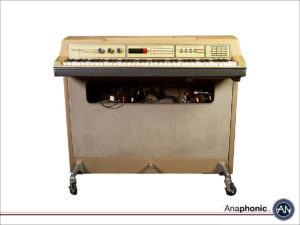
207
Read more -
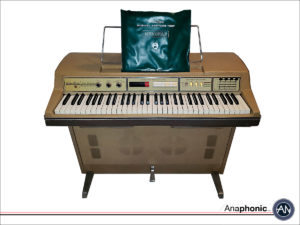
207A
Read more -

207V
Read more -

207VA
Read more


